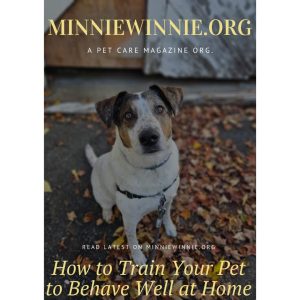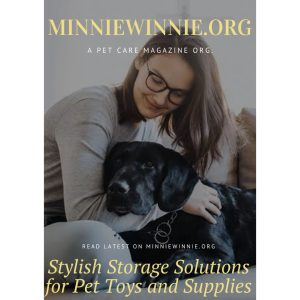Creating a Zen Den: Design Ideas for a Pet-Friendly Living Space
Incorporating pets into your living space requires thoughtful design to create an environment that is both comfortable for you and conducive to the well-being of your furry friends. A pet-friendly home doesn’t have to sacrifice style for functionality. With a blend of creativity and practicality, you can create a “Zen Den” that promotes peace, comfort, and happiness for both humans and pets. Here’s a guide to designing a harmonious living space that caters to the needs of your beloved animals.
Understanding Pet Needs
Before diving into design ideas, it’s essential to understand the fundamental needs of your pets:
- Comfort: Soft, warm places to rest and sleep.
- Safety: Secure areas where they feel protected.
- Stimulation: Toys and activities to engage their minds and bodies.
- Hygiene: Easy-to-clean spaces to maintain a healthy environment.
Designing for Dogs
Dogs are social animals that thrive on interaction and activity. Here’s how to design a dog-friendly living space:
Cozy Corners
Create a designated spot where your dog can retreat to relax and feel secure.
- Dog Beds: Invest in a high-quality, orthopedic dog bed that offers comfort and support. Place it in a quiet corner where your dog can rest undisturbed.
- Blankets and Cushions: Add soft blankets and cushions to make the space more inviting.
Functional Flooring
Opt for pet-friendly flooring that is durable and easy to clean.
- Hardwood or Laminate: These surfaces are easier to clean and less likely to trap pet hair and odors.
- Area Rugs: Use washable area rugs for added comfort and style. Choose materials that are resistant to stains and wear.
Storage Solutions
Keep pet supplies organized and accessible.
- Built-in Cabinets: Incorporate built-in cabinets or shelves to store toys, leashes, and grooming supplies.
- Hooks and Racks: Install hooks near the entrance for easy access to leashes and collars.
Activity Zones
Designate areas for play and exercise to keep your dog entertained.
- Interactive Toys: Place puzzle toys and treat dispensers around the living area to engage your dog’s mind.
- Open Space: Ensure there is enough open space for your dog to move around freely and play fetch indoors.
Designing for Cats
Cats are independent creatures that appreciate vertical space and cozy hideaways. Here’s how to create a cat-friendly living space:
Vertical Spaces
Cats love to climb and observe their surroundings from a height.
- Cat Trees and Shelves: Install cat trees and wall-mounted shelves to give your cat vertical territory.
- Window Perches: Create window perches where your cat can bask in the sun and watch the outside world.
Hideaways
Provide secluded spots for your cat to retreat and feel secure.
- Cat Caves: Use cat caves or enclosed beds for a sense of security.
- Hidden Nooks: Create hidden nooks using furniture or specially designed cat furniture that blends with your decor.
Scratching Posts
Scratching is a natural behavior for cats, so provide appropriate outlets.
- Scratching Posts: Place scratching posts or pads around the house to protect your furniture.
- Variety: Offer a variety of scratching surfaces, such as sisal, cardboard, and carpet.
Designing for Small Pets
Small pets like rabbits, guinea pigs, and hamsters also need thoughtful design to ensure their comfort and safety.
Secure Enclosures
Provide a spacious and secure enclosure that allows for natural behaviors.
- Habitat Design: Design habitats with multiple levels, hiding spots, and chew toys to keep small pets active and entertained.
- Safety First: Ensure the enclosure is escape-proof and safe from household hazards.
Enrichment Activities
Keep small pets stimulated with various activities and toys.
- Chew Toys: Provide safe chew toys to help maintain dental health.
- Tunnels and Huts: Incorporate tunnels and huts for exploration and hiding.
Aesthetic Integration
Creating a pet-friendly space doesn’t mean compromising on style. Here’s how to blend functionality with aesthetics:
Stylish Furniture
Choose pet-friendly furniture that complements your decor.
- Durable Fabrics: Opt for furniture with durable, stain-resistant fabrics. Leather and microfiber are good choices for pet households.
- Slipcovers: Use stylish slipcovers that are easy to remove and wash.
Decorative Elements
Incorporate pet elements into your decor seamlessly.
- Pet Beds: Select pet beds that match your home’s color scheme and style.
- Pet Art: Decorate with pet-themed artwork or photos that celebrate your furry friends.
Green Spaces
Incorporate pet-safe plants to add greenery without risking your pet’s health.
- Pet-Safe Plants: Choose non-toxic plants such as spider plants, Boston ferns, and African violets.
- Vertical Gardens: Use vertical gardens to keep plants out of reach of curious pets.
Maintenance and Cleanliness
A clean home is essential for a pet-friendly environment.
- Vacuum Regularly: Invest in a high-quality vacuum cleaner designed for pet hair.
- Washable Fabrics: Use washable fabrics for pet bedding, slipcovers, and rugs to maintain cleanliness easily.
- Air Purifiers: Consider air purifiers to reduce pet dander and odors.
Conclusion
Creating a Zen Den that caters to both your needs and those of your pets is about balancing comfort, functionality, and style. By understanding your pet’s behavior and incorporating thoughtful design elements, you can create a harmonious living space that fosters peace and happiness for all inhabitants. Whether you have dogs, cats, or small pets, these design ideas will help you build a pet-friendly home that is both beautiful and practical. Embrace the challenge and enjoy the process of transforming your living space into a sanctuary for you and your beloved pets.










